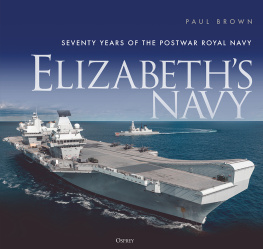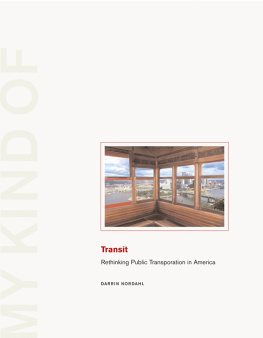THE TTC STORY
IN THE BEGINNING...
City of Toronto BY-LAW No. 8828
To provide for taking possession of the street railways and property to be acquired from the Toronto Railway Company, and to authorize the carrying out of the order of the Honourable Mr. Justice Latchford dated the twenty-fifth day of August, 1921, and to entrust to the Toronto Transportation Commission the control, maintenance, operation and management of the said street railways and property, and also to entrust to the said Commission the control, maintenance, operation and management of the Municipal street railways controlled and operated by the Corporation.
(Passed August 31, 1921)
THE TTC STORY
The First Seventy-five Years

MIKE FILEY
with photos from the TTC Archives as selected by TED WICKSON

Copyright Mike Filey, 1996
All rights reserved. No part of this publication may be reproduced, stored in a retrieval system, or transmitted in any form or by any means, electronic, mechanical, photocopying, recording, or otherwise (except brief passages for purposes of review), without the prior permission of Dundurn Press Limited. Permission to photocopy should be requested from the Canadian Reprography Collective.
Edited by Nadine Stoikoff
Designed by Sebastian Vasile
Printed and bound in Canada by Best Book Mfrs.
The publisher wishes to acknowledge the generous assistance and ongoing support of the Canada Council, the Book Publishing Industry Development Program of the Department of Canadian Heritage, the Ontario Arts Council, and the Ontario Publishing Centre of the Ministry of Citizenship, Culture, and Recreation.
Care has been taken to trace the ownership of copyright material used in the text (including the illustrations). The author and publisher welcome any information enabling them to rectify any reference or credit in subsequent editions.
J. Kirk Howard, Publisher
Canadian Cataloguing in Publication Data
Filey, Mike, 1941
The TTC Story: The First Seventy-five Years
ISBN 1-55002-244-X
1. Toronto Transit Commission History.
2. Local transit Ontario Toronto Metropolitan Area History. I. Title.
| HE4509.T6F5 1996 | 388.40971354109 | C95-932541-7 |

Dundurn Press Limited
2181 Queen Street East
Suite 301
Toronto, Canada
M4E 1E5
Dundurn Distribution
73 Lime Walk
Headington, Oxford
England
0X3 7AD
Dundurn Press Limited
1823 Maryland Avenue
P.O. Box 1000
Niagara Falls, N.Y.
U.S.A. 14302-1000
CONTENTS
This book is dedicated to the memory of Ho Xian Lin, Christina Reyes, and Kinga Szabo, victims of the tragic Spadina subway accident of August 11, 1995, and to the memory of Dimitrija Jimmy Trajceski, who was killed while on duty at the Victoria Park subway station on October 23, 1995.
PREFACE
In looking back seventy-five years to 1921, there is no doubt that public transportation has played a major role in the development and maturing of Toronto and its metropolitan area. Indeed, despite the recent downturn in the local economy and fiscal challenges facing it, the TTC in 1996 remains a transit agency with an enviable reputation for excellence. It has a strong customer base and enjoys Canadas highest ridership per capita. The Commissions safety record and its route system with widespread surface and subway route integration is unmatched in North America. Metro Toronto citizens, as TTC customers and taxpayers, have shown an intimate appreciation of the role and achievements of their public transit service. In recent decades, their concerns and input often have been manifested in intense public and political debates over TTC planning issues healthy signs of the communitys high regard for a transit system intrinsic to the well-being and lifeblood of Metro Toronto. Whereas the TTC era, from 1921 to 1996, reflects a planned and integrated approach to serving the needs of transit riders, the previous seventy-five years, by contrast, can be best described as the pioneering and entrepreneurial epoch for transit.
When the Town of York was incorporated as the City of Toronto in 1834, it was a compact community of ten thousand, nestled close to Lake Ontario just west of the Don River. Most journeys by residents were short and carried out on foot or horseback. By this time the major thoroughfares, such as Yonge Street and Lakeshore and Kingston roads, offered suburban and long-distance stage coach service. Water transportation to out-of-town points on Lake Ontario and inland rivers was also well-established. The arrival of the steam railways in the 1850s further revolutionized inter-city travel.
However, in 1849 it was a local cabinetmaker, Henry Burt Williams, who established the first scheduled urban transportation service in Toronto. His small fleet of horse-drawn omnibuses plied Yonge Street for twelve years, linking the St. Lawrence Market with the Village of Yorkville. In 1861, the horse-drawn Toronto Street Railway (TSR) obtained a thirty-year franchise to inaugurate Canadas first streetcar system. With TSR fares set at five cents a typical hourly wage at the time streetcar riders tended to be the more affluent. In winter, passengers and crew had to be a hardy lot as the cars were not heated and operators were exposed to the elements as they stood on the cars open front platform.
Electrification of the street railway came in 1892, a year after a thirty-year franchise was granted to William Mackenzie and his Toronto Railway Company (TRC). The TRC made many improvements in the technical development of its vehicles. Cars dramatically increased in size, heating was introduced, and air brakes soon became standard equipment. By 1910, after two decades of TRC service, Torontos size and population had almost doubled, reaching thirty-four square miles and thre hundred and fifty thousand residents. In this period the TRC experienced record ridership increases but the company was reluctant to extend service to new areas outside the 1891 city limits. Court challenges by the city were unsuccessful, prompting City Hall to establish the Toronto Civic Railways in 1911 to fill the vacuum created by Mackenzies TRC. Between 1912 and 1917, five civic lines opened: Bloor West, Gerrard, Danforth, St. Clair, and Lansdowne, all of which were completely separate from the Toronto Railway Company. Municipal experience gained in running the civic railways proved to be invaluable as the city began to define the future TTCs mandate in its efforts to assert its control over all public transit throughout the city.
The Toronto Railway Company in its final years was unable to adequately meet service demands due to a loss of one-third of its wooden streetcar fleet in disastrous carhouse fires just before and during the First War. Few replacement cars were built. As well, much of the track and remaining rolling stock was rapidly deteriorating as the company scaled back maintenance. Torontonians grew increasingly impatient and intolerant with the stagnation of public transit. By now, there were nine separate systems collecting nine separate fares. A journey by transit within the city limits cost anywhere from two cents to fifteen cents. Events culminated at the January 1, 1920 municipal elections when an overwhelming majority of citizens voted to have the city take over the Toronto Railway Company at the expiration of its franchise in 1921. The stage was set for the new Toronto Transportation Commission to assume its mandate. But first, at the request of the City, the Ontario legislature needed to pass an Act incorporating the TTC. Under the provisions of the Act, which became law in June 1920, the Commission became a corporate body separate and distinct from the municipal corporation with the same legal status as other corporations. In effect, the TTC was granted a monopoly on all transportation services in the city, except steam railways and taxis. It would be controlled by a commission of three resident ratepayers appointed by City Council.
Next page





